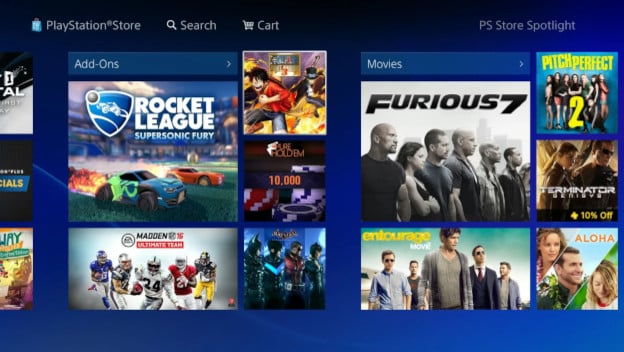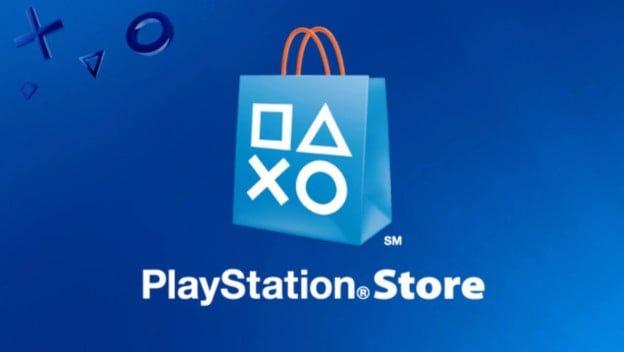PlayStation announced some changes coming to the PlayStation webstore and mobile store. Some of them make sense as they’re gearing up for the release of the PlayStation 5. Some of them are kind of weird. And pretty much all of it directly affects PS3, PSP, and PS Vita, though one thing will also affect at least the PS4. Even though it does make sense in the environment that Sony is trying to create, it’s a bad idea.
Now, some of the things that are going away that don’t really affect the console experience too much are the apps and theme backgrounds. The apps are nice, but ultimately one of the reasons you’re getting a gaming console is to game. The themes give something new to look at in the background, but ultimately, you’re not going to lose anything in the translation without being able to get more theme backgrounds, especially not on the handhelds or the PS3. The avatars are also going to be disappearing for at least the PS3, PSP, and PS Vita. Again, it’s not something that’s really going to affect the gaming aspect, so that’s not that big of a deal.
Here’s where the issue is starts to come up, since it starts directly affecting the ability to get into game. If you do a lot of digital shopping, you’ve probably made extensive use of the wish list function, especially during times when you’re light on money. Guess what. The wish list function is also going to be disappearing from the PlayStation store in general. That’s not a really big deal though either, though it’s going to be annoying for anyone who made extensive use of the function. It’s mostly because they’re going to have to start searching again, hoping that they could find those titles that interested them or that they found some level of novelty in. It makes sense why they made this change though, and the reason why is the biggest problem of this story.
The PlayStation Store, unless you’re shopping from specifically the PS3 or PS Vita consoles, will no longer carry PS3, PSP, or PS Vita games. This means that if you’ve got multiple generations on your wishlist, since they’ll no longer all be available through the PlayStation Store through the web or through mobile, they kind of have to clear out the function and rebuild it for the revamped store. In a previous article, I brought up the issue of preservation coupled with the issue of reliance on emulators and ROMs/ISOs while talking about how the limited backward compatibility doesn’t make sense. This is a huge blow for game preservation.

Here’s the thing, and I’ll say it again. Since the install base for the PS3 and PS Vita isn’t regularly growing, sooner or later, those digital stores will go down. Coupled with that, the hardware itself ages and eventually breaks down as well. So, sooner or later, there’s not going to be a working PS3, PSP, or PS Vita. The retro gaming market ebbs and flows, but ultimately, it’s something that is always there. People interested in game design, especially if they’re trying to get a license on a long-lived franchise, will want to play the older games to see what worked and what didn’t. With backward compatibility and digital sales of the older stuff, consumers would still need to come to PlayStation and put at least some money down, which directly benefits PlayStation and the Publishers/Developers. Sure, the benefit isn’t as big as it used to be, but still. It’s something. Without it, especially with commercial ways getting reduced and eventually erased, retro players end up needing to turn to emulators and ROMs/ISOs.
This move also really shows how much PlayStation has changed since the release of the PS2. One of the big selling points for the PS2 was the backward compatibility. They made that a big selling point for the console against its competition from Sega and Nintendo. Since it was backward compatible and doubled as a DVD/CD/VCD Player, it communicated a bigger benefit than the Dreamcast and the Nintendo Gamecube. Now some PlayStation leadership has complained that the older games look dated. But if you really look at it, some very successful games emulate that older style. For example, Octopath Traveler emulating the SaGa and SNES Final Fantasy days with updated lighting and texture effects or Anodyne emulating classic top-down Legend of Zelda pixel art. Both Evoland games spend a lot of time in 2D pixel art. Dragon Quest XI allows you the choice to even play the full game or at least flashback portions in 2D pixel art like the classic NES/SNES Dragon Quest/Dragon Warrior games. The Last Door, a 2013-2016 episodic horror game, is a point&click adventure game for PC, consoles, and mobile that is incredibly effective at its scares (even compared to big budget 3D, high fidelity games) while looking slightly more dated than Indiana Jones and the Fate of Atlantis, a point&click adventure game from 1992. The point is that graphics help but looking dated is not a bad thing. If available, people will return to it, either for the love of a series, love of games, the possible lessons, or just curiosity.
